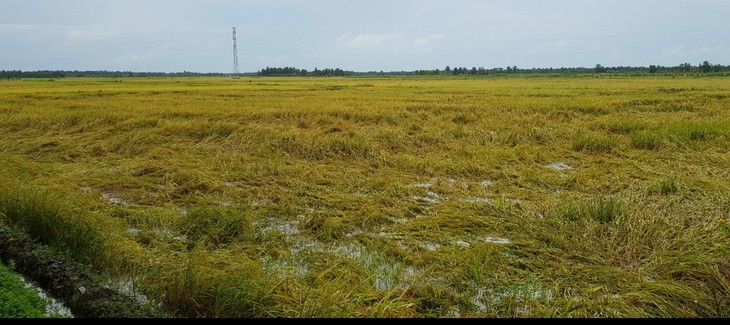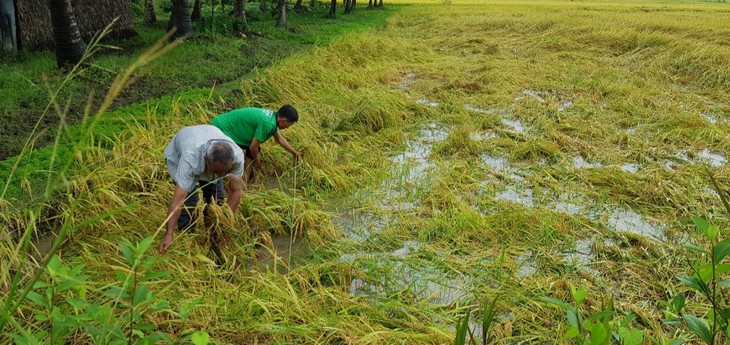(VOVWORLD) -Large-scale rice field farming in Phu Can commune, Tieu Can district, Tra Vinh province, is a key model for new-style rural building. The model got Phu Can recognized as a new rural village in 2013 and helped it meet the advanced criteria for new-style rural areas in 2020.
 A large-scale rice field in Phu Can commune (Photo: Ngoc Anh) A large-scale rice field in Phu Can commune (Photo: Ngoc Anh) |
Large-scale rice fields is a new farming method in which farmers link small fields to grow crops in accordance with the Vietnamese Good Agricultural Practices (VietGAP) standards. The method reduces input costs and increases productivity.
Phu Can commune has 3,120 households with 11,560 people, 62% of them ethnic Khmer. They mainly rely on agricultural production, especially rice cultivation. Because the local topography makes it difficult to store water for agriculture, local farmers could only grow one rice crop a year, during the rainy season.
In 2006 Tieu Can district built a concrete canal for rice irrigation. It consists of a main canal 1.7 km long and 18 branch canals totaling 6.7 km.
Since the canal was completed, farmers have secured water, conserved water during drought and saltwater intrusion periods, increasing rice productivity significantly, said Thach Thang, a Phu Can villager.
“A 110-hectare field was created in 2007 after the concrete canal was built. We don't have to worry about either water for irrigation or water fees because the state takes care of all of it. When I didn't participate in the large-scale rice field model to grow high-quality rice, I barely earned enough to live on and didn’t have any savings. Now we are growing three crops. Qualified rice is easily sold to traders,” Thang told VOV.
Phu Can commune has 126 households engaged in the large-scale rice field model, and has integrated the flooded-dried production model to mitigate climate change.
In addition to reducing costs, the new model has increased productivity and limited rice price falling. As of the 2021-2022 winter-spring rice crop, the integrated model has been applied to more than half of the rice cultivation area in the commune.
Bui Truong An, Vice Chairman of Phu Can’s People's Committee, said, “When the large-scale rice field model was first implemented, local farmers didn’t believe in it. But when it proved effective, it restored their trust in the local government’s leadership and received strong support from the provincial Party Committee and the district People's Committee.”
An recalled, “In the past, the average rice yield was 4.2 tons per hectare, but that has increased to 6.5 - 7.5 tons of rice per hectare since the large-scale rice field model was adopted. Farmers’ incomes have grown significantly. The Phu Can agricultural cooperative has been assigned to manage the model. Farm households have been trained in rice farming techniques and insect control. The Phu Can agricultural cooperative was established in 2013. Phu Can commune aims to set up more cooperatives to collaborate with the Phu Can cooperatives.”
 Farmers in Phu Can commune (Photo: Ngoc Anh) Farmers in Phu Can commune (Photo: Ngoc Anh) |
Large-scale rice fields in Phu Can are associated with a chain of production links, agricultural material supply, and farm produce sales, said Thach Xe, a member of the Phu Can agricultural cooperative.
He said, “Under the large-scale rice field model, farmers are allocated cultivation land and the state manages irrigation and rice trading for them. Local people are charged nothing for irrigation water or just 8.5 dollars to irrigate 1,000 m2. The cooperative provides seedlings and outlets, so we don't have to worry about being squeezed by traders.”
“My family grows 1.5 hectares of rice and raises cows for extra income. After deducting expenses, I make a profit of about 840 dollars from each rice crop and 2,100 dollars for the whole year,” according to Thach Xe.